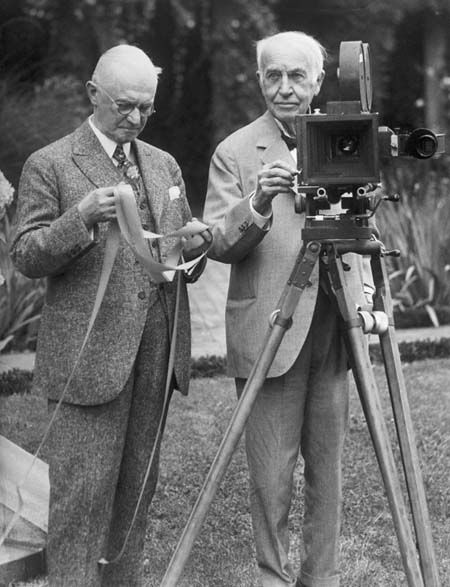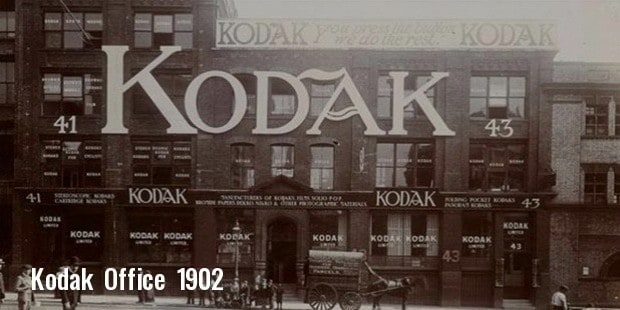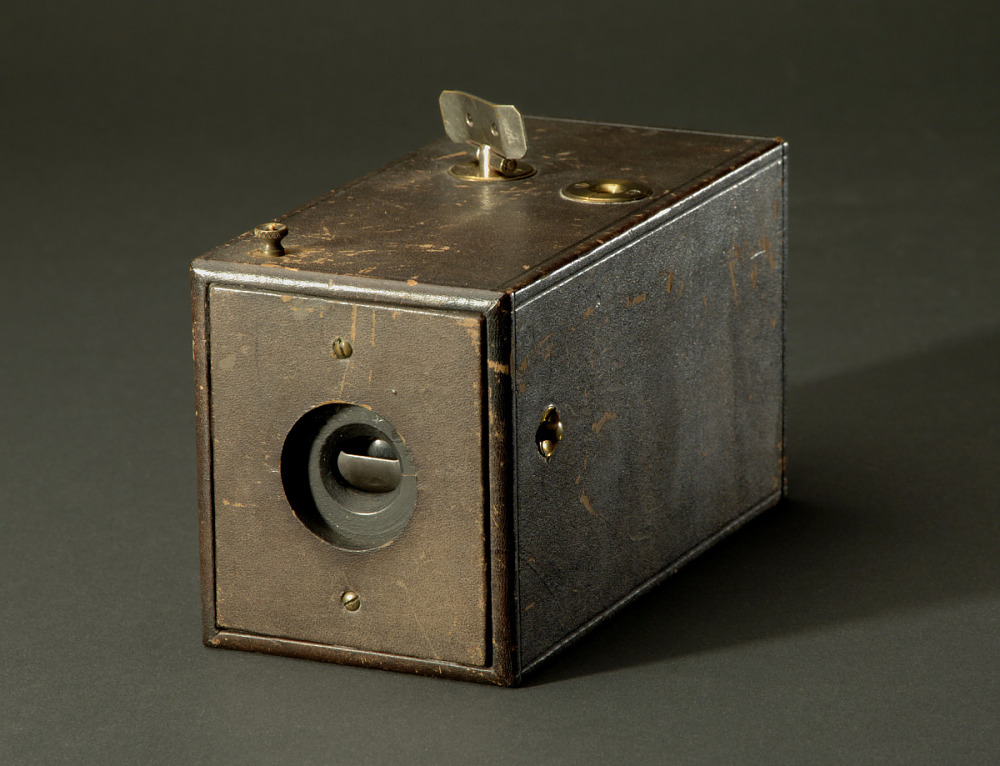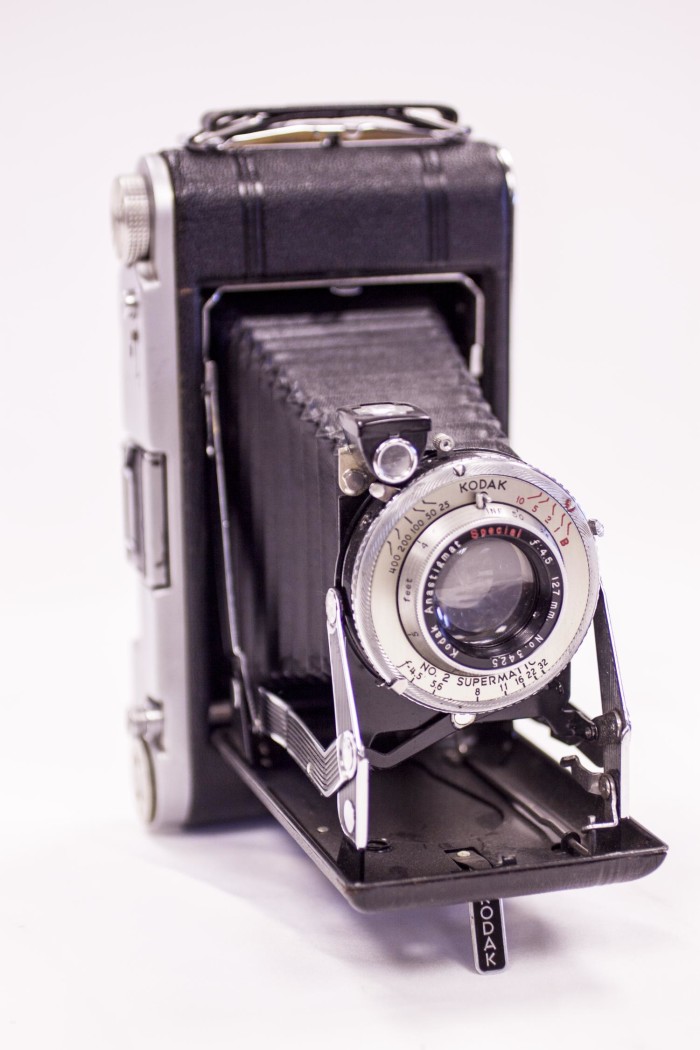Eastman Kodak, known worldwide as Kodak, was founded in the nineteenth century and immediately became an innovator in photography. The brand is known for creating a consumer market for amateur photography and pioneering technology to shoot Hollywood movies.

The path to success
The history of Kodak began when 24-year-old George Eastman became interested in investing in the land around the new American naval base near Santo Domingo. When George started planning the trip, a friend recommended buying a camera to document all the investment opportunities. The trip did not occur, but Eastman had already purchased his first camera and soon became interested in photography as a hobby.
At that time, photography required serious investments of money and time. The “kit” Eastman bought consisted of a camera the size of a soap dish, a tripod, a stand for photographic plates, a tent for a dark room, a nitrate bath and a water tank necessary for photographing. Professional photographers would have put up with all the troubles, but Eastman did not want to keep such large equipment in his small room.
Only three years later, he developed a machine that mechanically produced dry plates, received a US patent for several developments and began their production in 1880. After retiring from his full-time job at the bank, a year later, he devoted himself entirely to photography. In the late 1880s, Eastman opened his first retail store on Oxford Street in London; stores in Paris and other cities soon followed. At the same time, Eastman came up with a new name for the product — Kodak. The slogan was: “You press the button, and we do the rest.” The idea and the name spread rapidly.

Why did Kodak become successful?
First of all, the reason for the success was that George Eastman decided to democratize photography. He believed that it was possible to make it accessible to everyone by changing the way of shooting. With the development of the innovative Kodak camera, Eastman allowed anyone interested in photography to take high-quality pictures without dimensional equipment.
Over the following decades, the company developed innovations and inventions that helped the business achieve its founder’s goal. While Kodak’s offering met customer needs, Eastman Company’s business model generated revenue. Kodak’s business strategy followed the model of Gillette’s founder, who practically handed out razors to make money on blades. Kodak cameras were sold at a low price to increase sales of an additional product – film. Customers took photos with a Kodak camera and then sent the camera to a Kodak factory, where the photos were printed.

Digit vs Analog
In the 1980s, the photography industry began to shift towards digital technology. One would think that the transition to digital technology would be the next logical step for Kodak. However, the brand again decided to rely on the accompanying materials and developed a new direction – printers. The company focused on the printing industry, creating expensive printers and inexpensive inks, while its competitors made money by selling expensive inks.
As it turned out, digital cameras were not the most breakthrough discovery. Smartphones have conquered the world, and sales of digital camera manufacturers have begun to decline rapidly. Consumers were moving from printing photos to storing them on digital devices or publishing them online on social media platforms.
Years before Facebook, Kodak made an unexpected business move and in 2001 acquired a photo-sharing site called Ofoto. Unfortunately, instead of eventually switching to Instagram, Kodak used Ofoto to get more people to print digital images. However, the Kodak business literally missed the digital revolution, could not adjust, and collapsed. The company was forced to declare bankruptcy in 2012.

Rebirth from the ashes
However, in 2013, the company announced its return to the New York Stock Exchange. Today, Kodak, with an updated business strategy, instead of the previous guidelines for the mass photography segment, is focused on the development and manufacture of packaging, the production of complex printing machines and the printing of electronic components (screens and chips). The new strategy allowed Kodak to get out of bankruptcy and stay on the market. Thus, Kodak continues to lead its history for more than 133 years.

a small fact 🙂
As a person engaged in photography, I always prefer Kodak film to others due to the rich and pleasant colours when developing.
References
https://americanhistory.si.edu/collections/search/object/nmah_760118
https://en.wikipedia.org/wiki/Kodak
https://www.1ink.com/blog/history-of-kodak-a-brief-look-with-1inkcom/

Leave a Reply